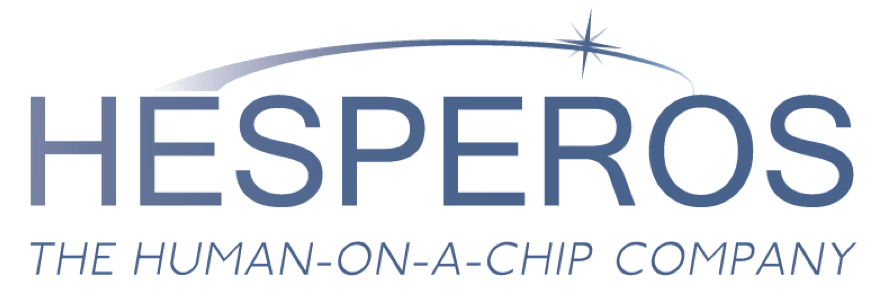ORLANDO, FLA – September 6, 2018 — Hesperos, Inc. announced today the receipt of a $4 million three-year NIH Phase IIb Small Business Innovation Research (SBIR) grant from the National Institutes of Health (NIH) National Center for Advancing Translational Sciences (NCATS) to increase capacity for its novel human-on-a-chip technology, and prepare its systems for regulatory approval utilizing advanced PKPD modeling capabilities.
“Over the last three years we have proven that our systems work, and have formed multiple collaborations with companies seeking to access the next generation of preclinical drug discovery systems. Now the Phase IIb grant will enable us to increase our platform’s capabilities, as well as gain regulatory acceptance of these systems for diseases such as ALS, Alzheimer’s, cancer, diabetes, and rare diseases,” added James J. Hickman, Ph.D., Hesperos CSO and Professor at the University of Central Florida’s Hybrid Systems Laboratory.
NCATS was established in 2011 to address the long timelines, steep costs and high failure rates associated with the drug development process. To further support this initiative, in 2012 the NIH and FDA partnered to form a collaboration with the Defense Advanced Research Projects Agency (DARPA) focused on advancing development of human-on-a-chip technology and created the Tissue Chip for Drug Screening program.
An 18-month $2 million Direct-to-Phase II SBIR grant from NCATS was awarded in 2016 to support development of advanced manufacturing techniques for a human-on-a-chip system being jointly developed by the University of Central Florida and Cornell. Hesperos was founded in 2014 to commercialize this technology and the funding was utilized to scale this platform to commercial level capacity. It is now the first to reach the Phase IIb level of funding, which is awarded to proven systems that require additional effort to enable commercial acceptance and regulatory approval.
“NCATS’ Tissue Chip program is a critical component of our work to get more treatments to more patients more efficiently, as is providing SBIR funding to enable small businesses like Hesperos to commercialize their innovative technologies,” said Lili M. Portilla, M.P.A., the SBIR Program Director and Director of the NCATS Office of Strategic Alliances.
“The current paradigm for investigational drug testing in the laboratory uses simple two-dimensional cell cultures, a system that has been shown by both academia and the pharmaceutical industry to be ineffective and inefficient,” said Danilo A. Tagle, Ph.D., M.S., Associate Director for Special Initiatives and Acting Deputy Director of NCATS. “Human chip technology has the potential to transform pre-clinical testing of drug candidates by providing a more sophisticated, three-dimensional environment that is more biologically relevant and predictive of human response.”
The Hesperos platform is unique in that it can realistically model multi-organ low volume systems using human-derived cells in a serum-free medium, with pump-free circulation. This in vitro microphysiological platform uses a rocking motion to move the cellular medium, reducing the complexity and cost of the fluidic circuit design and simplifies set-up and operation. Its microelectrode arrays and cantilever systems allow for noninvasive electronic and mechanical readouts for chronic as well as acute drug studies.
The company has constructed physiological systems that represent human cardiac, skeletal muscle, neuronal, liver, vasculature, blood brain barrier, gastrointestinal tract and neuromuscular junctions (NMJs), and various combinations of these organ modules have been integrated onto a single platform to examine interchanges of drug metabolites or cell signaling molecules produced in response to drugs.
Hesperos has worked with various firms using these multi-organ systems for preclinical evaluation of drugs or toxicity tests on chemicals, and will partner with Roche pRED (Pharma Research and Early Development), Bioverativ Inc., a Sanofi company, and other pharmaceutical companies during this phase to further validate the system and move the technology to a level where it can be cost effective for routine applications in preclinical studies.
“We will determine if these systems can predict multi-organ responses to selected drugs and compare to human clinical data where available,” said Dr. Hickman. “These studies will provide a basis for validation and qualification with the FDA. While the systems still have significant value to pharmaceutical, food and cosmetic companies without it, FDA approval would greatly accelerate adoption of this technology.”
